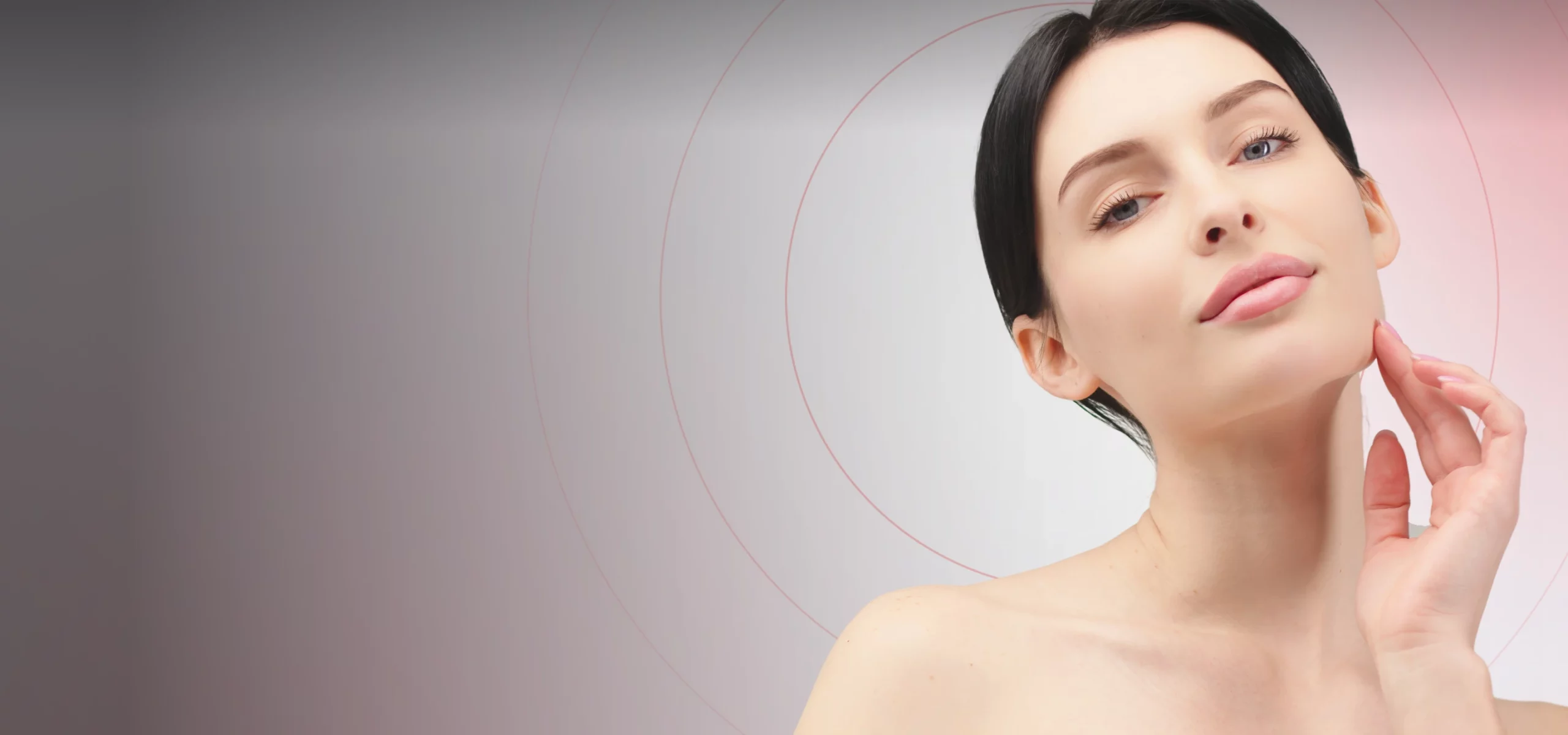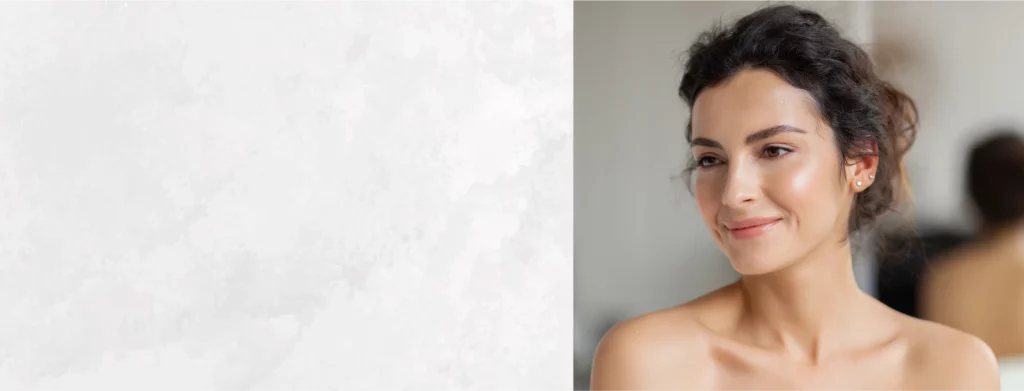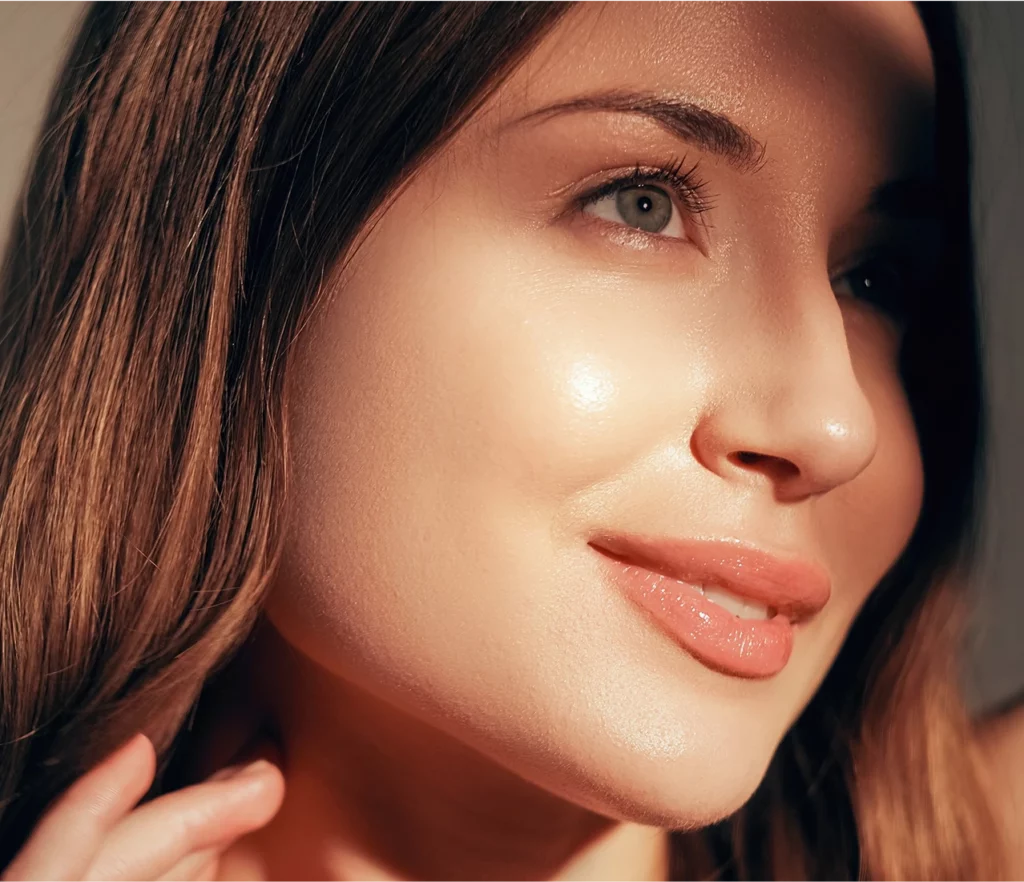Many patients seeking laser skin rejuvenation in Charlotte come to Only Faces because they want to address fine lines, uneven skin tone, sun damage, dullness, and various medical conditions without invasive procedures. Whether you are struggling with age-related changes, acne scars, or pigmentation issues, laser treatments offer a powerful way to refresh and revitalize your skin, revealing a smoother, brighter, and more youthful complexion.


Laser skin rejuvenation is a cosmetic procedure that uses energy-based devices to target various skin concerns. Our advanced technologies deliver controlled pulses of light or laser energy to the skin’s surface. The treatment can be customized to address multiple treatment areas, including the face, neck, and décolletage. Typically, a session lasts between 30 and 60 minutes, depending on the size of the area being treated. This treatment stimulates the skin’s natural renewal processes.
Acne vulgaris is the medical term for non-cystic acne. It is the most common form of acne that we all remember from our teenage years. Cystic acne is a deeper type of acne. It is less common and is not treatable with a laser, but does respond well to a medication known as Accutane. Accutane has side effects and is prescribed by dermatologists.
Acne vulgaris can be treated safely with the “SmoothBeam” laser. This laser targets the oil glands in the dermis of the skin, which in turn leads to a cessation of acne. It is very effective and relatively pain-free. All lasers carry a risk of scarring and/or change in pigmentation, but these risks are very rare. Most patients experience significant improvement after one treatment, but may require more than one treatment at times. The treatments can be performed by our laser nurse, who is ASLSM certified, which helps keep the treatments more affordable. See some of the before and after results below.
Café-au-lait spots are light to dark brown pigmented birthmarks that commonly appear on a newborn’s skin. It is estimated that around 10% of newborns have a café-au-lait spot. They can change in size and number over time. More than six café-au-lait spots can be a sign of an underlying genetic condition, such as neurofibromatosis. Patients with 6 or more spots should seek medical evaluation before considering laser intervention. Fortunately, the Q-switched Nd:YAG laser can usually significantly improve these benign lesions with one treatment.
All lasers carry a risk of scarring and/or change in pigmentation, but these risks are very rare. The treatment is performed without anesthesia and can be administered by our laser nurse, who is ASLSM certified, which helps keep the treatments more affordable. See photo below.
A cherry angioma is a noncancerous (benign) skin growth made up of blood vessels. There is no known cause, but a genetic component may be present. The growths can appear anywhere on the body, but they tend to grow most frequently on the chest, stomach, and back. They’re usually found on people aged 30 and older.
Fortunately, cherry angiomas respond well to pulsed dye lasers. The treatments are very safe. While all lasers carry a risk of scarring and/or change in pigmentation, these issues are very rare. Pulsed dye laser therapy requires no anesthesia but may involve multiple treatments. The treatment can be performed by our laser nurse, who is ASLSM certified, which helps keep the treatment more affordable. See the photo below.
Lentigines are flat spots of increased pigmentation. They are usually tan, brown, or dark brown (darker than freckles). Solar lentigines have oval to round shapes and vary in size. They usually appear on areas most exposed to the sun, such as the scalp, face, hands, arms, and upper trunk. Lentigines are primarily caused by sun exposure. The sun’s UV radiation causes skin cells called melanocytes to produce more pigmentation in your skin. This is why people tan, burn, or freckle after spending time in the sun. Over the years, damage from UV radiation can cause pigmentation deposits in your skin. They can sometimes be cancerous, and all patients should consult a dermatologist if they have growing or changing brown spots.
However, the benign lesions, which of course are the vast majority, can be easily and safely removed with the Q-switched Nd:YAG laser. All lasers carry a risk of scarring and/or change in pigmentation, but these risks are very rare. The treatment requires no anesthesia. The procedure can be performed by our laser nurse, who is ASLSM certified, which keeps the treatment more affordable. See the examples below.
Nevus de Ota is a condition characterized by brown, blue, or gray patches, typically located on the inner aspect of the eye and on the skin surrounding or near the eye. It may also affect the eyelid and mouth. This condition is caused by an increase in the number of cells called melanocytes in skin and eye tissue. Nevus de Ota is caused by the entrapment of melanocytes in the upper third of the dermis. It is found only on the face, most commonly only on one side. The white part of the eye is involved in two-thirds of cases, and all patients should see an eye doctor to rule out glaucoma. These patches are considered benign; however, all patients should consult a dermatologist initially.
Nevus de Ota can be treated with the Q-switched Nd:YAG laser. All lasers carry a risk of scarring and/or change in pigmentation, but these risks are very rare. The treatments must be repeated more than once, as the target tissue is located in the dermis. The treatment can be performed by our laser nurse, who is ASLSM certified, which helps keep the treatment more affordable. See the example below.
Rhinophyma is a skin disorder characterized by the enlargement and reddening of the nose, resulting in a bumpy, bulbous appearance. The enlargement is due to sebaceous gland hyperplasia. Sebaceous glands are found in the dermis of the skin. The reason for this disfiguring condition has no clear causative trigger. The severe forms are more common in males, and a genetic predisposition may be present.
Treatment varies depending on the degree of the lesion. In general, anesthesia is required. For minor cases, an ablative CO2 laser may be sufficient. For more advanced cases, a combination of surgical excision and ablative CO2 laser treatment is often necessary. All lasers carry a risk of scarring and/or change in pigmentation, but these risks are very rare. See the photos below.
Rosacea is a long-term inflammatory skin condition that causes reddened skin and a rash, usually on the nose and cheeks. It may also cause eye problems. The symptoms of a rash/reddened skin typically wax and wane, and most patients have certain foods or conditions that can trigger their rosacea. It is helpful for that patient to avoid these triggers.
Since rosacea is a physiological condition, laser treatment cannot cure rosacea, but it can help reduce the appearance of dilated blood vessels that may result. Treatment requires no anesthesia and is very safe. All lasers carry a risk of scarring and/or change in pigmentation but these risks are very rare. The treatment can be performed by our laser nurse, who is ASLSM certified, which helps keep the treatment more affordable. See examples below.
Sebaceous gland hyperplasia (SGH) is caused by an overabundance of sebocytes. These are special cells that make up the sebaceous glands. The excess cells enlarge the sebaceous gland, making it grow several times larger than normal and therefore protrude from the skin. An evaluation must be done to ensure the lesion is not a basal cell carcinoma. It is usually found in people over 40 and is more common on the forehead and nose.
SGH responds nicely to treatment with the smooth beam laser. The procedure is generally safe. All lasers carry a risk of scarring and/or change in pigmentation but these risks are very rare. No anesthesia is required. The treatment can be performed by our laser nurse, who is ASLSM certified, which helps keep the treatment more affordable. See the examples below.
A spider angioma is a small red to purple mark on your skin caused by dilated (wide) blood vessels (capillaries) near the surface of your skin. Spider angiomas are usually harmless, but if you have multiple marks on your skin, it could be a sign of liver disease, and you should initially consult with your primary care physician.
Fortunately, the vast majority of spider angiomas appear without an underlying cause and can be safely and effectively treated with the pulsed dye laser. The treatment is generally safe. All lasers carry a risk of scarring and/or change in pigmentation but these risks are very rare. The procedure requires no anesthesia. The treatment can be performed by our laser nurse, who is ASLSM certified, which helps keep the treatment more affordable. See examples below.
Tattoos are popular today. However, if you decide to have one removed, it can be done. Tattoo removal typically requires multiple treatments, and certain colors can be more challenging to remove. Red and black tattoos are the easiest to remove. It is recommended that the patient apply topical anesthesia before each treatment. The treatments are safe, but there is a risk of permanent changes in pigmentation and/or scarring, which are not common.
We use the Q-switched Nd:YAG laser with various handpieces to target each color individually. The treatment can be performed by our laser nurse, who is ASLSM certified, which helps keep the treatment more affordable. See examples below.
Venous malformations are a type of vascular malformation that results from veins that have developed abnormally, which stretch or enlarge over time. Larger lesions require excision in the operating room and/or interventional radiology. All are blueish, and they can vary in size and depth.
Smaller lesions can be successfully treated with the pulsed dye laser, sometimes with the aid of the diode laser to facilitate intralesional ablation. All lasers carry a risk of scarring and/or change in pigmentation, but these risks are very rare. If the latter laser is needed, the surgery is done under anesthesia. For small lesions done with the pulsed dye only, no anesthesia is necessary. This treatment usually requires more than one procedure. The pulsed dye laser treatments can be performed by our laser nurse, who is ASLSM certified, which helps keep the treatment more affordable. See the examples below.
Venular malformations are flat (macular) when we are young and bumpy (papular) when we are older. They are due to abnormally innervated small veins (venules) in the dermis of the skin. Port-wine stains are always present at birth. They grow with the patient, occupying the same percentage of the skin as the patient grows. They should be treated when the patient is young, with a better chance of significantly improving the lesion. Depending on the location, size, and age of the patient, anesthesia may be necessary.
Treatment is performed using a pulsed dye laser. All lasers carry a risk of scarring and/or change in pigmentation, but these risks are very rare. For small lesions in older patients, our laser nurse, who is ASLSM certified, can perform the laser treatments, making the procedures more affordable.
Before the procedure, a topical numbing cream may be applied to ensure your comfort throughout the session. Depending on the treatment areas, this helps minimize any discomfort you might feel during the laser application.
During the laser skin rejuvenation, you may experience sensations similar to the snap of a rubber band against the skin, which is typically well-tolerated thanks to the numbing cream. Our provider will carefully target the designated body areas, delivering energy-based pulses to stimulate skin renewal.
After your session, our provider will discuss any immediate follow-up care and schedule future appointments as needed. Touch-ups may be recommended to maintain or enhance your results, depending on how your skin responds to the initial treatment.


The cost of laser skin rejuvenation in Charlotte ranges from $300 to $2,000 per session, depending on factors such as the size of the treatment areas and the specific technology used. Additional sessions or touch-ups may be recommended to achieve optimal results, which can affect the overall investment. Our providers offer customized treatment plans tailored to various budgets, ensuring effective care.

Laser treatments can help improve the appearance of stretch marks by promoting healthy skin regeneration, but complete removal is not guaranteed. Results depend on the age and severity of the stretch marks, as well as the individual’s skin response.
>The Q-switched Nd:YAG laser is used to target a wide range of skin concerns, including pigmentation issues, by delivering high-intensity pulses of light that break down pigment in the skin. In contrast, the FDA-approved HALO™ treatment is a hybrid fractional laser that works by treating both the superficial top layer of the skin and deeper layers to stimulate collagen production, helping to reduce wrinkles and improve overall skin texture.
Both laser and RF energy treatments can be effective, but their suitability depends on your aesthetic goals. Lasers often target pigmentation and texture more precisely, while radiofrequency may be more effective for tightening and stimulating collagen. Sometimes, combining treatments can deliver the best results.
While we don’t offer laser treatments for unwanted hair, we specialize in a variety of advanced laser procedures designed to enhance your skin’s health and appearance. Our team is dedicated to helping you achieve your skin rejuvenation goals with the latest technology and personalized care.